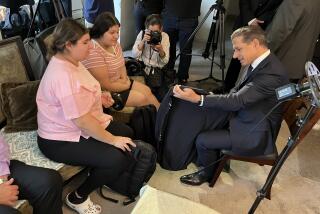Do’s and Don’ts of Treating Kids’ Colds
- Share via
The sights and sounds are everywhere: the red, runny noses, the used tissues in wastebaskets, the depleted shelves of cough syrup and throat lozenges. And now your child has a cold. What’s a parent to do?
First, make sure you know when to call the doctor. Reasons might include the following:
* A high fever (100 degrees or higher in a child younger than 3 months, 101 degrees or higher in a child 3 months to 3 years old, 103 degrees or higher in a child 3 years or older) or a fever that lasts more than two days, despite medication. (However, it’s not uncommon for children to run a fever of 102 to 104 degrees for a few days; a high fever doesn’t necessarily mean the child is seriously ill.)
* Rapid breathing or shortness of breath.
* A stiff neck or headache.
* Difficulty swallowing.
* Persistent brown, green or bloody mucus.
* Signs of dehydration, which include severe thirst, dark yellow urine, infrequent urination, dull or sunken eyes, dry skin and dry or cracked lips.
* Your child doesn’t look right to you, even after you’ve administered a non-aspirin pain reliever.
If you’re satisfied that what your child needs is a little TLC and over-the-counter medications, read on. Call your doctor, though, if you’re unsure; don’t take this article as a substitute for medical care.
Soothe your child’s sore throat with plenty of liquids to keep the throat moist and to reduce pain. Good choices include frozen juice bars and flat soda. Older children may have throat drops or lozenges. Give acetaminophen or pediatric ibuprofen to relieve pain. Never give aspirin to anyone 18 or younger. Aspirin in childhood has been linked to Reye’s syndrome, a potentially fatal illness.
To quiet a cough, serve warm fluids, such as soup, and give cough syrup if the child is uncomfortable. Avoid serving milk products, which increase mucus production.
Ease congestion with steam from a shower or a cool-mist vaporizer. You can use over-the-counter decongestants, but be sure to use those that are appropriate for your child’s age--check with a pharmacist about the appropriate dosage for young children.
Take care of a fever by giving fluids to replace those lost through sweat, or try cool sponge baths.
Sources: StayWell Co., Johns Hopkins Family Health Book.


